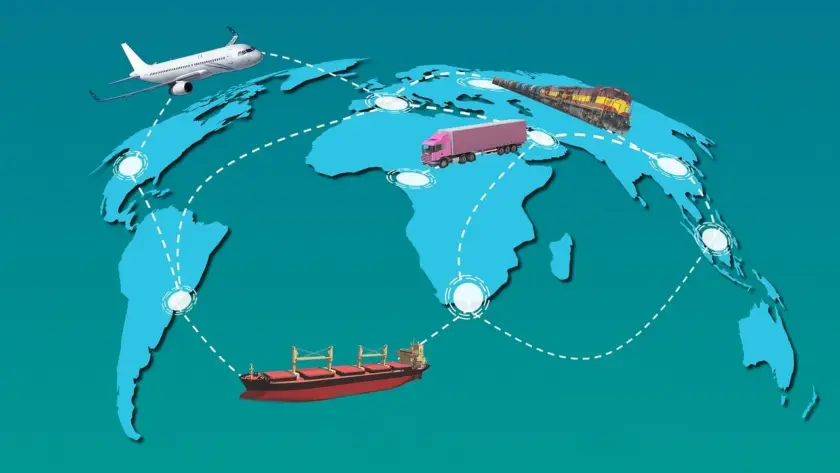The global textile supply chain is one of the largest and most complex economic systems in the world. Stretching from cotton fields in India to spinning mills in Bangladesh, dye houses in China, design studios in Italy, and retail showrooms in New York, the supply chain links millions of workers, thousands of companies, and nearly every consumer market on the planet.
Yet the sector is under pressure. Rising costs, environmental mandates, geopolitical tensions, and shifting consumer expectations are reshaping how textiles are sourced, produced, and delivered. For family offices and conglomerates like Neyius, this transformation is not a distant challenge but an immediate strategic concern. The ability to navigate supply chain risks while investing in opportunities will determine which firms maintain resilience and which lose market relevance.
This article explores the challenges and opportunities in the global textile supply chain, drawing on industry research, governance frameworks, and the family office ethos of stewardship. It concludes with lessons for organizations that seek to balance efficiency with responsibility in a rapidly evolving marketplace.
When we talk about ‘smart transportation,’ it is more than moving cargo from A to B. Digitization within transport and logistics means seamless service to our customers, visibility in the supply chain, and driving a more efficient business. –Soren Skou
The Stages of Production
The textile supply chain involves multiple interconnected phases:
- Raw Material Sourcing – Natural fibers (cotton, wool, silk) and synthetics (polyester, nylon).
- Spinning and Weaving/Knitting – Converting raw fibers into yarns and fabrics.
- Dyeing and Finishing – Adding color, texture, and functional treatments.
- Garment Manufacturing – Cutting, sewing, and assembly into finished products.
- Distribution and Retail – Logistics, branding, and sales to global markets.
Each stage involves distinct legal, environmental, and operational considerations. From water-intensive cotton production to chemically complex dyeing processes, the chain demands careful oversight and disciplined capital infusions.
The Scale of the Industry
- The textile and apparel sector employs over 300 million people worldwide.
- It contributes an estimated $1.7 trillion annually to the global economy.
- Supply chains often span multiple jurisdictions, exposing firms to a patchwork of labor, environmental, and trade laws.
For global family offices and institutional investors, textiles are both a source of opportunity and exposure — a sector requiring active governance, legal foresight, and operational resilience.



Key Challenges in the Global Textile Supply Chain
1. Geopolitical and Trade Tensions
Tariffs, trade restrictions, and shifting alliances complicate textile flows. The U.S.–China trade dispute, Brexit, and evolving EU trade regulations have forced companies to reassess sourcing strategies. Over-reliance on single regions now poses unacceptable risks.
Neyius’ approach — balancing Pacific production hubs with diversified sourcing in Latin America and Southeast Asia — reflects a broader industry trend toward supply chain redundancy and risk hedging.
2. Environmental Pressures
The textile industry is among the largest polluters globally:
- Responsible for 20% of global wastewater.
- Contributes 10% of global carbon emissions.
- Generates millions of tons of textile waste annually.
Regulatory frameworks (EU Green Deal, U.S. Environmental Protection Agency rules) demand compliance with stricter environmental standards. Firms unable to adapt face fines, litigation, and reputational damage.
3. Labor and Human Rights
Sweatshop scandals, child labor concerns, and unsafe factory conditions remain persistent issues. Tragedies like the Rana Plaza collapse in 2013 underscore the legal and moral imperatives of supply chain accountability.
For a family-office-driven conglomerate, embedding labor ethics and compliance into governance frameworks is non-negotiable.
4. Supply Chain Disruptions
Events such as the COVID-19 pandemic revealed structural fragility. Lockdowns halted production, container shortages disrupted logistics, and demand volatility left inventories misaligned. These shocks underscore the need for resilient, tech-enabled supply chains.
5. Cost Pressures
From rising wages in traditional textile hubs to inflation in raw materials, cost volatility is a constant. Compounded by the expenses of adopting sustainable practices, the pressure threatens margins unless balanced by efficiency, innovation, and differentiated value propositions.
Opportunities Ahead
1. Digitization and Technology Integration
Digitization transforms supply chains through:
- Blockchain – enabling end-to-end traceability.
- AI and Data Analytics – forecasting demand, optimizing logistics.
- 3D Design and Virtual Sampling – reducing waste in prototyping.
- Automation – improving efficiency and reducing labor risks.
Research shows that digitally integrated supply chains outperform traditional models by 15–25% in efficiency and enjoy greater agility in adapting to market shocks.
2. Sustainable and Ethical Sourcing
Consumer demand for sustainable textiles is accelerating. Nielsen reports that 73% of global consumers are willing to change consumption habits to reduce environmental impact. This presents a competitive opportunity:
- Organic and recycled fibers.
- Closed-loop dyeing and water systems.
- Fair-trade certifications.
Neyius Textiles has embedded these principles into its operating model, integrating lifecycle analysis and supply chain audits as governance standards rather than marketing tools.
3. Regional Diversification
“China Plus One” strategies — sourcing from multiple regions — enhance resilience. Southeast Asia, Latin America, and Africa are emerging as viable hubs, supported by infrastructure investment and trade incentives.
For conglomerates with patient capital, diversifying textile operations geographically not only mitigates risk but also positions them to capture growth in developing markets.
4. Family Office Stewardship and Patient Capital
Family offices are uniquely positioned to shape textile supply chains:
- Long-term orientation allows investment in sustainable infrastructure and R&D.
- Governance discipline ensures compliance with ESG frameworks.
- Capital flexibility enables opportunistic acquisitions during industry disruptions.
Neyius’ structure demonstrates how conglomerate stewardship can integrate textile sustainability with generational wealth strategies.
Part IV – Legal and Governance Dimensions
Regulatory Compliance
Key legal frameworks include:
- EU REACH – regulation of chemicals in textiles.
- U.S. Tariff and Customs Laws – affecting import/export logistics.
- ILO Standards – labor rights compliance.
- ESG Reporting Mandates – increasingly required by investors.
Legal compliance must be codified in supply contracts, supplier audits, and internal governance. Family offices bring a legalistic rigor often absent in fragmented corporate structures.
Risk Management
Effective risk management includes:
- Insurance against supply disruptions.
- Hedging raw material costs.
- Diversifying both suppliers and logistics routes.
- Contractual protections with force majeure clauses.
Transparency and Reporting
Supply chain transparency is no longer optional. Regulators, and consumers demand verifiable data. Blockchain-enabled traceability and independent third-party audits ensure credibility.



